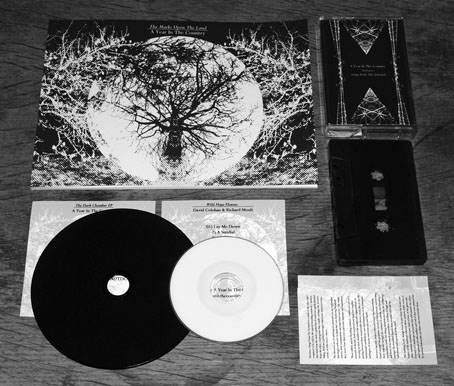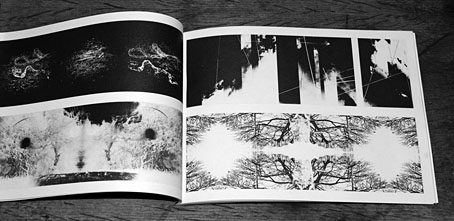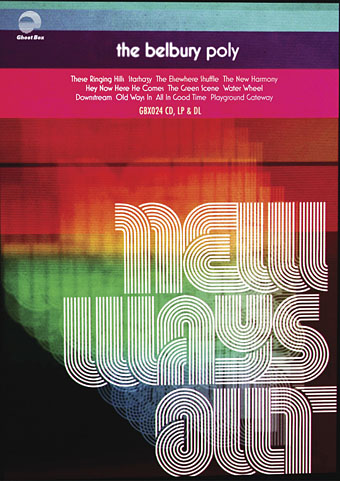The latest release from A Year In The Country, The Marks Upon The Land, sees the label pushing its roots into a new medium with a 60-page book collecting the monochrome imagery featured on the label’s website and CD packaging. That imagery—described on the website as “explorations of an otherly pastoralism, a wandering amongst subculture that draws from the undergrowth of the land – the patterns beneath the plough, pylons and amongst the edgelands”—converts the bucolically familiar into something more eerie or even sinister, a series of widescreen mutations that create pareidolia spectres through symmetry and layering. Seen in isolation, these images are arresting enough but they gain power by being collected together, fashioning a statement of intent.
Statement or not, it can be difficult to sell people semi-abstract imagery so it’s probably wise that The Marks Upon The Land comes with a musical accompaniment in the form of two 4-track CDs—Wild Hope Flowers by David Colohan and Richard Moult, and The Dark Chamber EP by A Year In The Country—and a 12-track cassette, Airwaves: Songs From The Sentinels by A Year In The Country (the book will also be available on its own). The Dark Chamber is described as an audio exploration of the imagery in the book although I found that Airwaves: Songs From The Sentinels was just as fitting, if not more so, since the pieces are fluid soundscapes with a sinister edge. The Dark Chamber is a series of electronic instrumentals, one of which, The Dark Chamber, is an uptempo piece of a kind more usually associated with city streets (bleating sheep and a distant rookery notify us that we’re still in the country). After appearing separately on previous A Year In The Country releases, David Colohan and Richard Moult provide a contrast to the electronic processing with four short piano-led songs, a reminder that the folk spirit still lurks in the hedgerows (what’s left of them).
The Marks Upon The Land will be released on 6th March, 2017. Order details and previews may be found here.
Previously on { feuilleton }
• The Forest / The Wald
• The Quietened Bunker
• Fractures




